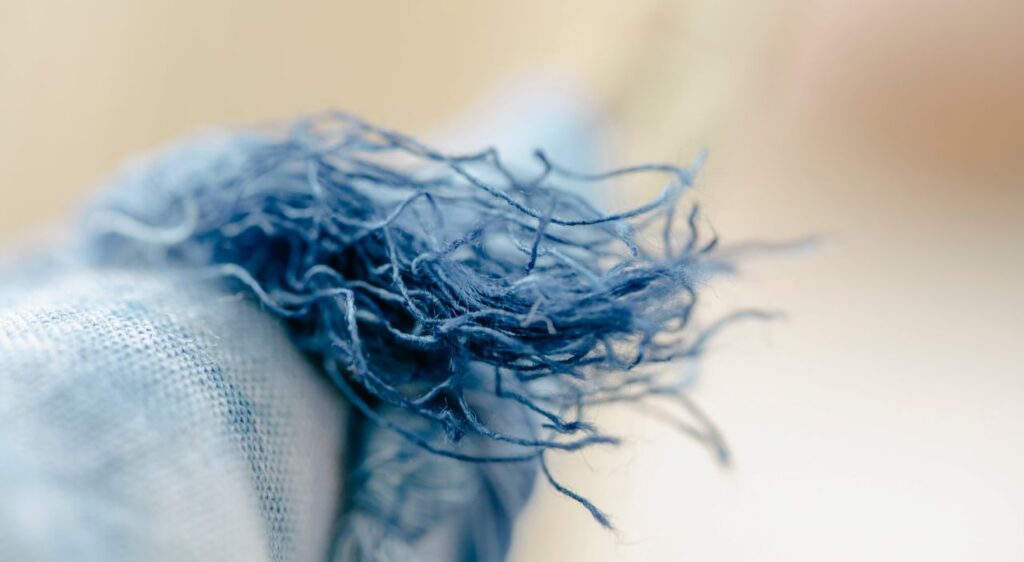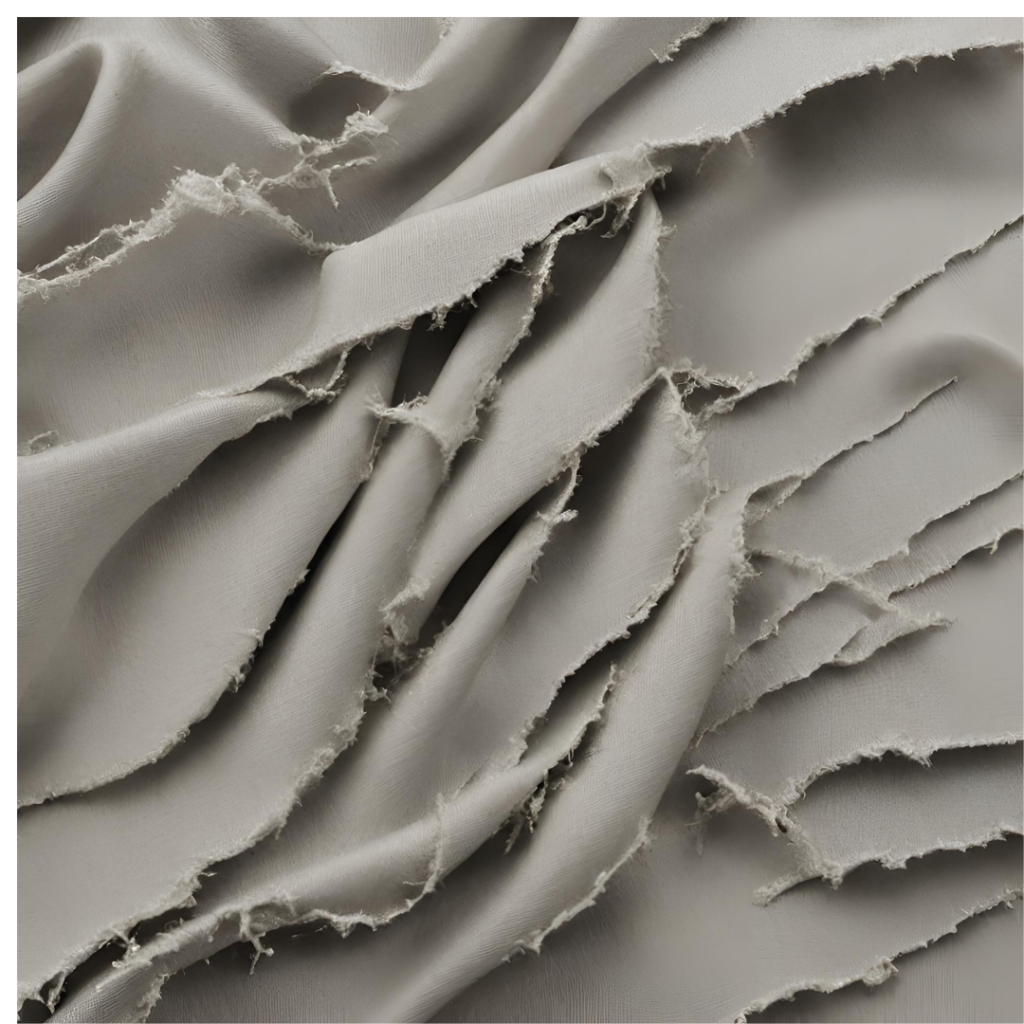Fraying fabric is the arch-nemesis of any sewing enthusiast. That moment when the edges of your meticulously crafted fabric start to unravel can be frustrating, but you can stop fabric from fraying.
So fear not! There are numerous techniques to prevent this unruly behavior and maintain the integrity of your projects. Not taking anti-fraying precautions is one of the most common sewing mistakes for beginners. But as you learn to sew, you’ll quickly master several techniques that will prevent this headache.
Understanding Why Fabric Unravels so You Can Stop Fabric from Fraying

Before diving into solutions, it’s crucial to comprehend why fabric frays. Fraying occurs when the individual threads of the fabric’s weave begin to separate from the edge. Factors like fabric type, weave structure, and usage frequency contribute to fraying. However, with the right techniques, you can significantly minimize this issue.
Fraying, in its essence, is the gradual unraveling or separation of individual threads from the fabric’s edge. The fabric’s construction, weave, and how it reacts to wear and tear primarily influence this phenomenon.
Fabric Type and Weave Structure
Different fabrics possess varying degrees of susceptibility to fraying. Natural fibers like cotton and linen are more prone to fraying due to the loose construction of their threads. On the other hand, synthetic materials like polyester and nylon or tightly woven fabrics like denim are less prone to fraying.

The weave structure also plays a crucial role. Fabric types with an open weave or loosely woven threads, such as chiffon or muslin, are more likely to fray compared to tightly woven materials like canvas or twill.
Usage and Handling
The frequency and manner in which a fabric is used also contribute to fraying. Garments, linens, and items subjected to regular washing, rubbing, or frequent handling are more susceptible to fraying along the edges. Always follow proper guidelines on how to wash fabric before sewing.
Additionally, rough handling during sewing or cutting can weaken the fabric’s edge, making it more prone to unraveling.
Environmental Factors
External elements such as humidity, temperature changes, and exposure to sunlight can impact a fabric’s propensity to fray. High humidity can sometimes soften fibers, making them more prone to fraying, while sunlight exposure might weaken the fabric’s fibers.
10 Ways to Stop Fabric From Fraying
Let’s get down to the nitty-gritty and figure out how to keep that precious fabric intact!
1. Widen Seams
Simply widening your seam allowance provides more fabric to prevent unraveling. Consider using a 5/8 inch (or wider) seam allowance for fabrics prone to fraying.
2. French Seams
French seams involve encasing the raw edge within the seam, providing a clean finish that inhibits fraying. Ideal for lightweight and delicate fabrics.
3. Interfacing
Applying interfacing to the fabric’s edge reinforces it, making it less susceptible to fraying. This method is particularly effective for preventing fraying on garment edges.
4. Pinking Shears
Pinking shears create zigzag edges that help deter fraying. They’re an excellent option for fabrics that are not too prone to unraveling or for quick finishes. Just remember to follow sewing safety rules and keep your fingers away from the teeth!
5. Zig-Zag Stitch
Using a zigzag stitch along the fabric’s edge provides a barrier that prevents fraying. Adjust the stitch width and length based on the fabric type.
6. Blanket Stitch
A hand-sewn or machine-made blanket stitch secures the fabric’s edge with a neat, decorative border, significantly reducing fraying. This is an incredibly helpful stitch to learn how to sew by hand.
7. Serger
A serger, or overlocker, is a specialized sewing machine that trims fabric edges and stitches over them, creating a professional, fray-free finish. Once you’re ready to upgrade from your beginner’s sewing machine, a serger is a terrific investment!
8. Bias Tape
Binding the fabric’s edge with bias tape not only prevents fraying but also adds a decorative touch to your project. Bias tape is a must-have in supplies for sewing!
9. Stop Fray Solution
Commercially available fray stop solutions, often in liquid form, are applied to the fabric’s edge, effectively halting fraying.
10. Fabric Glue
Applying fabric glue to the edge can secure threads and prevent unraveling. Ensure the glue is fabric-safe and test it on a scrap piece first.

The Bottom Line
Fraying fabric doesn’t have to dampen your sewing spirit. Armed with these ten techniques, these professional sewing tips can safeguard your creations from the clutches of fraying. Experiment with these methods to find what works best for your fabric type and project, and bid adieu to unraveling edges for good!
Remember, preventing fraying not only ensures the durability of your creations but also adds a professional touch to your sewing projects. Happy stitching!

